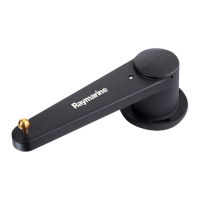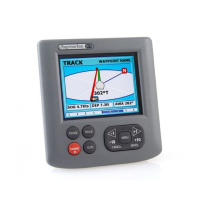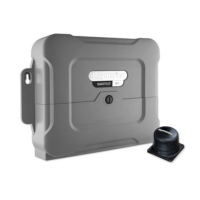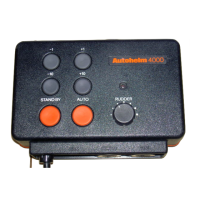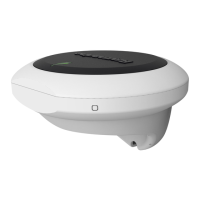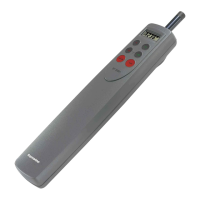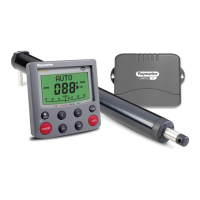Chapter 5: Commissioning the Autopilot 49
5 Commissioning the Autopilot
Adjusting autopilot settings
The next stage of the seatrial is to set key autopilot parameters that
affect the autopilot’s steering characteristics.
You need to manually adjust the rudder gain, counter rudder and
AutoTrim settings, based on your observations of the boat’s
performance under autopilot control.
Adjust these settings when motoring your boat at cruising speed.
On sail boats, repeat if necessary under sail to optimize the pilot.
Checking autopilot operation
Before manually adjusting any of these settings, we recommend that
you familiarize yourself with basic autopilot operation:
1. Steer onto a compass heading and hold the course steady.
If necessary, control the boat manually for a while to check how
the boat steers.
2. Press
AUTO to lock onto the current heading. The autopilot
should hold a constant heading in calm sea conditions.
3. Use the course change knob to check how the autopilot alters the
course to port and starboard.
Sterndrive systems only: With the RayPilot in Auto mode and
clear of obstruction, turn the steering wheel to observe the
manual override (AutoRelease). Repeat two or three times until
you are confident with its operation.
4. Press
STBY to return to hand steering.
Adjusting the rudder gain
Boats can vary widely in their response to helm, and by adjusting the
rudder gain you can change the autopilot’s steering characteristics.
Rudder gain is a measure of how much helm the autopilot applies to
correct course errors – higher settings mean more rudder is applied.
Complete the following test to determine whether the rudder gain is
set correctly:
1. Set Response to level 2:
• press the
RESP key for 2 seconds, then use the ▲ (NAV),
▼ (LIGHTS) key or course change knob to adjust the setting,
then wait for five second to return to Standby mode
81013_4.book Page 49 Wednesday, July 25, 2001 11:04 AM
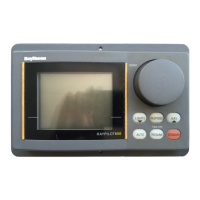
